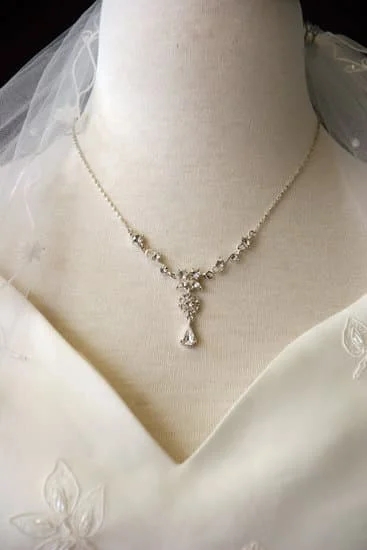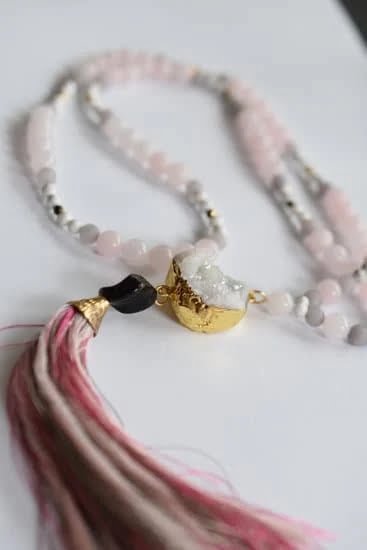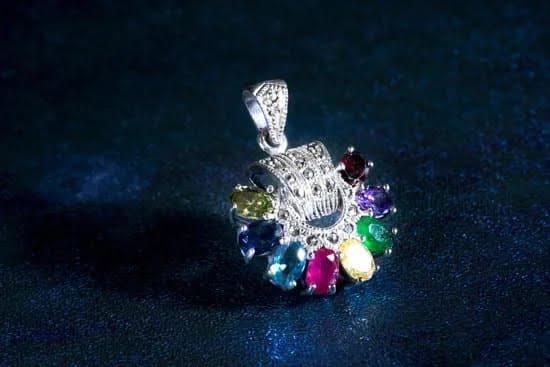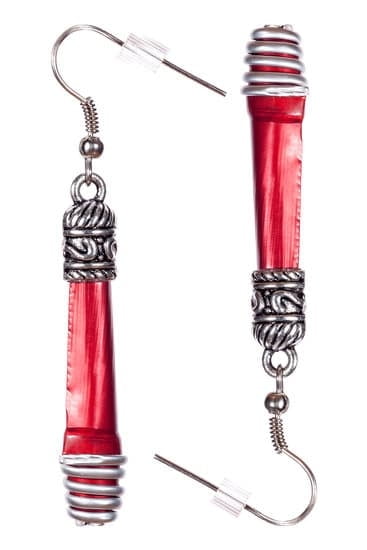Gold-plated jewelry has long been admired for its luxurious and opulent appearance. The shimmering gold surface adds a touch of elegance to any outfit, making it a favorite choice for both casual and formal occasions. In this article, we will delve into the world of gold plating, exploring its basics, benefits, and how to achieve that coveted gold-plated look for your own jewelry collection.
Understanding the concept of gold plating is essential before embarking on the process. Unlike solid gold jewelry, which is made entirely of gold, gold-plated jewelry consists of a base material coated with a layer of gold. This technique offers several advantages such as affordability and versatility. Gold plated jewelry allows you to enjoy the aesthetics and prestige associated with real gold while being more budget-friendly.
Choosing the right base material is crucial when considering gold plating. Common choices include silver or brass, both of which provide a solid foundation for achieving durable and beautiful results. The base material should be properly cleaned and prepared before undergoing the gold plating process to ensure optimal adhesion and longevity.
Join us as we dive deeper into the art of acquiring stunning gold-plated jewelry. We will guide you through each step: from selecting the appropriate base material to finding a trusted professional service for quality results. Additionally, we will explore alternative options such as gold-filled or gold vermeil jewelry, as well as the possibility of DIY gold plating at home.
Prepare to be captivated by the allure of exquisite golden accents gleaming upon your favorite accessories. Get ready to discover how to get a gold-plated around jewelry in an accessible and affordable way that still exudes timeless elegance.
Understanding the Basics
Gold-plated jewelry is a popular choice for many individuals due to its timeless elegance and affordability compared to solid gold pieces. Understanding the basics of gold plating can help consumers make informed decisions when selecting their jewelry.
What is Gold Plating?
Gold plating involves depositing a thin layer of gold onto the surface of another metal, typically through an electroplating process. The base metal, such as silver or brass, provides the structure and durability while the outer layer of gold enhances its aesthetic appeal. The thickness of the gold layer can vary depending on personal preference and budget, ranging from a few microns to several microns.
Benefits over Solid Gold Jewelry
One major benefit of gold-plated jewelry is its affordability. Since only a small amount of gold is used in the plating process, it significantly reduces the cost compared to solid gold pieces while still maintaining their luxurious appearance. This makes it a more accessible option for those who desire the look and feel of gold without breaking their budget.
Another advantage of gold-plated jewelry is its versatility. Unlike solid gold jewelry which may be limited in design options due to the high cost of materials, gold-plated pieces can be available in various styles and intricate designs. This allows individuals to experiment with different trends and statements without committing to a substantial investment.
Furthermore, gold-plated jewelry tends to have better tarnish resistance than solid gold items due to the protective layer provided by the base metal beneath. With proper care and maintenance, gold-plated pieces can retain their luster for an extended period, making them suitable for everyday wear.
Understanding these fundamentals will enable consumers to make informed decisions about investing in gold-plated jewelry that suits their style preferences and budget constraints.
Choosing the Right Base Material
When it comes to gold-plated jewelry, choosing the right base material is crucial for achieving a high-quality and long-lasting result. The base material serves as the foundation for the gold plating process, providing durability and stability to the final product. Two popular options for base materials are silver and brass.
Silver
Using silver as a base material for gold plating offers several advantages. Firstly, silver is highly malleable, making it easier to shape into intricate designs or delicate pieces of jewelry. Additionally, silver is known for its excellent conductivity properties, allowing for a smoother and more even application of the gold plating layer.
Another benefit of using silver is its innate beauty. The natural luster and shine of silver complement the bright and radiant look of gold plating. This combination creates a stunning contrast that enhances the overall appearance of the jewelry piece. Silver also resists tarnish well, ensuring that your gold-plated jewelry maintains its brilliance over time.
Brass
Brass is another popular choice for a base material in gold plating due to its affordability and versatility. It is an alloy composed primarily of copper and zinc, which provides strength and durability to withstand daily wear. Brass can be easily manipulated into various shapes while maintaining its structural integrity.
One advantage of choosing brass as a base material is its warm tone, which adds depth to the final gold-plated piece. This can create a unique aesthetic appeal that goes beyond the standard yellow-gold look. Additionally, brass tends to resist corrosion fairly well when properly cared for, ensuring that your gold-plated jewelry stands the test of time.
Ultimately, whether you choose silver or brass as your base material will depend on your personal preferences and style goals. Both options offer their own distinct characteristics that can enhance the beauty of your gold-plated jewelry. Remember to consider factors such as durability, conductivity properties, tarnish resistance, and the desired aesthetic appeal when making your decision.
Preparing the Jewelry
Preparing the Jewelry: Step-by-Step Instructions on How to Properly Clean and Prepare the Jewelry for the Gold Plating Process
Before diving into the gold plating process, it is essential to properly prepare your jewelry. This step is crucial in ensuring a successful and long-lasting gold plating result. Here are some step-by-step instructions on how to clean and prepare your jewelry for the gold plating process.
Step 1: Clean the Jewelry
Begin by cleaning your jewelry thoroughly. You can use warm water and a mild dishwashing soap to remove any dirt, oils, or debris from the surface of the jewelry. Gently scrub the jewelry with a soft-bristle toothbrush or a cotton cloth. Rinse it thoroughly under running water and pat it dry with a clean cloth.
Step 2: Remove any Finish or Coating
If your jewelry has any existing finish or coating, such as varnish or lacquer, it is essential to remove it before proceeding with gold plating. Use a suitable solvent recommended for the specific type of finish on your jewelry. Apply the solvent according to its instructions and gently rub away the finish using a soft cloth or sponge.
Step 3: Polish and Buff
To achieve a smooth surface for gold plating, polish and buff your jewelry using a jeweler’s polishing compound. Apply a small amount of compound onto a soft cloth or buffing wheel and gently rub it onto the surface of your jewelry in circular motions. This will help remove any scratches or imperfections and create an ideal base for gold plating.
Step 4: Remove Oxidation
If your jewelry is made of metals that oxidize easily, such as copper or silver, it may have developed tarnish over time. To remove tarnish, you can use commercially available metal cleaners specifically designed for each metal type. Follow the instructions on the cleaner’s packaging carefully to ensure safe and effective tarnish removal.
Step 5: Rinse and Dry
After completing the cleaning and preparation process, rinse your jewelry thoroughly under running water to remove any residue from the cleaning agents. Make sure to dry it completely using a soft cloth or let it air dry before proceeding with the gold plating process.
By following these step-by-step instructions, you can ensure that your jewelry is adequately cleaned and prepared for the gold plating process. Proper preparation will help achieve a smoother application of gold plating, resulting in a more durable and long-lasting gold-plated piece.
Quality Gold Plating
When it comes to gold plating jewelry, quality is of utmost importance. Selecting a professional and trusted gold plating service is essential to ensure a high-quality and long-lasting result. With the right expertise, techniques, and materials, a reputable gold plating service can transform your jewelry into a luxurious piece that will stand the test of time.
The Importance of Professionalism
One of the key benefits of choosing a professional gold plating service is the level of professionalism they bring to the table. These services have the knowledge and experience to assess your jewelry and determine the best approach for gold plating. They understand the intricacies involved in working with different base metals and can tailor their techniques accordingly.
A professional gold plating service also ensures that all safety measures are taken during the process. They use specialized equipment designed for gold plating, which helps minimize any potential damage or mishaps. Furthermore, they adhere to proper guidelines and protocols to ensure a safe environment for both their employees and customers.
Ensuring Quality and Longevity
The quality of the gold used in the plating process is crucial in determining how long-lasting the result will be. A reputable gold plating service uses high-quality gold that meets industry standards. This ensures that your jewelry not only looks stunning but also remains intact for an extended period.
Additionally, professional gold platers take extra steps to enhance durability by using various protective coatings on top of the gold layer. These coatings act as a shield against wear and tear, preventing scratches or tarnishing. By selecting a trusted service provider, you can rest assured that your gold-plated jewelry will maintain its shine and beauty for years to come.
Applying the Gold Plating
The process of gold plating jewelry involves several steps and the use of specialized equipment and techniques. It is important to follow these steps carefully in order to achieve a high-quality and long-lasting result.
1. Preparation: Before applying the gold plating, it is crucial to properly prepare the jewelry. This involves cleaning the item thoroughly to remove any dirt, oil, or tarnish that may be present on its surface. You can use a mild soap or jewelry cleaner and a soft brush to gently clean the piece. Once cleaned, rinse the jewelry with warm water and dry it completely.
2. Electro-cleaning: After cleaning, it is recommended to undergo an electro-cleaning process to further eliminate any contaminants and ensure a clean base for plating. Electro-cleaning involves immersing the jewelry in an electrolyte solution and passing an electrical current through it. This helps remove any remaining impurities from the item’s surface.
3. Application of Gold Plating: The actual gold plating process requires specialized equipment such as a gold plating machine or kit, which includes an electroplating solution and electrodes made of pure gold or other compatible materials. The jewelry piece is connected to the positive electrode (anode), while the negative electrode (cathode) is made of pure gold. When electricity passes through the solution, gold ions are attracted to the item’s surface, creating a layer of gold coating.
It is important to note that different types of metals may require varying thicknesses of gold plating for optimal results. For instance, silver jewelry often requires thicker layers of gold plating compared to brass or copper pieces due to their inherent coloration differences. Additionally, pay attention to factors such as current density and immersion time during the plating process, as these can affect the quality and appearance of your final result.
| Step | Description |
|---|---|
| Preparation | Clean the jewelry thoroughly to remove dirt, oil, and tarnish. Rinse and dry completely. |
| Electro-cleaning | Immerse the jewelry in an electrolyte solution and pass an electrical current through it to further remove impurities. |
| Application of Gold Plating | Use specialized equipment such as a gold plating machine or kit, with electrodes made of pure gold. Connect the jewelry to the positive electrode (anode) and immerse it in the electroplating solution. |
By following these steps and utilizing proper techniques, you can achieve a beautiful and durable gold plated finish on your jewelry. Remember to always consult professional guidance or research extensively before attempting gold plating at home, as it requires knowledge of handling chemicals and working with electricity safely.
Maintenance and Care
Maintaining the shine and preventing tarnish on your gold-plated jewelry is essential to ensure its longevity and beauty. With proper care and maintenance, you can enjoy your gold-plated pieces for years to come. Here are some tips to help you properly care for and maintain your gold-plated jewelry:
- Keep it clean: Regularly clean your gold-plated jewelry to remove any dirt or oil buildup that can dull its shine. Use a soft cloth or a jewelry cleaning solution specifically designed for delicate metals like gold-plating. Gently wipe the surface of the jewelry to remove any impurities.
- Avoid exposure to chemicals: Chemicals found in household cleaning products, perfumes, lotions, and hairsprays can damage the thin layer of gold plating on your jewelry. It is important to avoid direct contact with these substances as they can cause discoloration or even corrode the plating.
- Store it properly: When you’re not wearing your gold-plated jewelry, store it in a cool and dry place away from direct sunlight. Excessive heat and moisture can accelerate the tarnishing process. Storing each piece separately in soft pouches or lined compartments will help prevent scratches and tangling.
- Be cautious during activities: It is advisable to remove your gold-plated jewelry before participating in activities that may expose it to excessive force, such as exercising or playing sports. This will protect it from potential damage or bending, which could affect the integrity of the gold plating.
- Re-plate when necessary: Over time, the thin layer of gold plating may wear off due to regular use and contact with various elements. If you notice significant fading or signs of wearing on your gold-plated jewelry, consider having it re-plated by a professional jeweler who specializes in gold plating services.
By following these maintenance tips, you can keep your gold-plated jewelry looking radiant and luxurious. Remember that although gold plating is durable, it does require proper care to maintain its luster. With a little attention and effort, your gold-plated jewelry will remain a stunning addition to your wardrobe for years to come.
Alternative Options
When it comes to achieving the luxurious and elegant look of gold-plated jewelry, there are alternative options available for those who may not want to opt for traditional gold plating. Two popular alternatives are gold-filled and gold vermeil jewelry.
Gold-filled jewelry consists of a thick layer of solid gold that is mechanically bonded to a base metal, usually brass or copper. This process creates a durable and long-lasting piece of jewelry that has the appearance and feel of solid gold at a fraction of the cost. In order for a piece to be labeled as “gold-filled,” it must contain at least 5% or 1/20th by weight of solid gold.
On the other hand, gold vermeil jewelry involves a combination of sterling silver and a thick layer of gold plating. Unlike traditional gold plating, which uses a base metal such as silver or brass, vermeil utilizes higher quality materials. The minimum requirement for an item to be considered “vermeil” is that it must have a thickness of at least 2.5 micrometers and be plated with no less than 10 karat gold.
Both these options provide an attractive middle ground between solid gold jewelry and basic gold plating, offering affordability without compromising on style and durability. Additionally, they are both versatile choices that can withstand daily wear if properly cared for.
| Option | Description | Minimum Requirements |
|---|---|---|
| Gold-Filled Jewelry | A thick layer of solid gold mechanically bonded to a base metal (usually brass or copper) | Contains at least 5% or 1/20th by weight of solid gold |
| Gold Vermeil Jewelry | Sterling silver with a thick layer of gold plating | Must have a thickness of at least 2.5 micrometers and be plated with no less than 10 karat gold |
Embracing DIY
For those who enjoy taking a hands-on approach to their projects, DIY gold plating at home is a viable option. While it may seem daunting at first, with the right tools and precautions, achieving a professional-looking gold-plated finish is possible.
Before embarking on a DIY gold plating project, it’s essential to gather the necessary tools. One of the most crucial tools is a gold plating kit, which typically includes items such as a power source, gold solution, activation solution, and a brush or pen applicator. It’s important to choose a kit that suits your specific needs and budget.
Additionally, you’ll need cleaning materials to prepare your jewelry for the gold plating process. These can include mild dish soap or jewelry cleaning solution, warm water, and a soft-bristled toothbrush or cloth for gentle scrubbing. Remember to handle your jewelry with care during the cleaning process to avoid scratching or damaging delicate pieces.
While DIY gold plating can yield fantastic results, it’s crucial to take necessary precautions to ensure safety throughout the process. When working with any chemicals involved in the gold plating solutions or activation methods, it’s vital to wear gloves and protective eyewear to prevent any potential harm. Additionally, always work in a well-ventilated area to minimize exposure to fumes released during the plating process.
By embracing DIY gold plating at home and following these necessary precautions and steps carefully, you can achieve beautiful results on your jewelry. However, remember that practice makes perfect – don’t be discouraged if your first attempt falls short of perfection. With persistence and attention to detail, you’ll soon master the art of DIY gold plating and have stunning pieces that rival professionally plated jewelry.
Conclusion
In conclusion, gold-plated jewelry continues to be a popular choice for those seeking a touch of timeless elegance. This article has provided valuable insights into the world of gold plating, highlighting its benefits compared to solid gold jewelry. It has emphasized the importance of selecting a suitable base material and properly preparing the jewelry before the gold plating process begins.
Quality and long-lasting gold plating can only be achieved by choosing a professional and trusted service. This ensures that the jewelry maintains its shine and does not tarnish easily. The detailed guide on the gold plating process, including specialized equipment and techniques, has provided a clear understanding of how this intricate process is undertaken.
Maintenance and care are essential to preserving the beauty of gold-plated jewelry. By following the tips provided in this article, one can ensure that their pieces continue to sparkle and remain tarnish-free for a longer period of time. Additionally, it is worth exploring alternative methods such as gold-filled or gold vermeil jewelry for achieving the same look as gold-plated jewelry.
For those who are DIY enthusiasts, attempting to gold plate jewelry at home is also an option. However, it is important to exercise caution and use appropriate tools and techniques to avoid any mishaps. The possibility of achieving professional-looking results at home should not be overlooked.
In summary, this article has touched upon various aspects related to getting a beautiful gold-plated piece of jewelry. From understanding the basics to choosing the right base material, preparing the piece for plating, finding a reputable service provider or exploring alternative options, there are several avenues through which one can achieve their desired look.
Regardless of whether one decides to go with professional services or embrace DIY approaches, it is undeniable that gold-plated jewelry adds beauty and versatility to any ensemble.

Welcome to my jewelry blog! My name is Sarah and I am the owner of this blog.
I love making jewelry and sharing my creations with others.
So whether you’re someone who loves wearing jewelry yourself or simply enjoys learning about it, be sure to check out my blog for insightful posts on everything related to this exciting topic!





